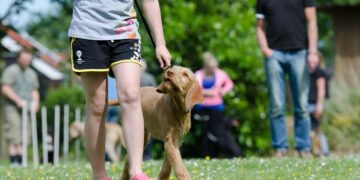Exploring the Best Free Dog Training Near Me: A Comprehensive Guide
Are you looking to train your furry friend without breaking the bank? Finding effective, free dog training programs can be a challenging yet rewarding journey. This guide will provide you with detailed insights into how you can access the best free dog training resources, understand common training techniques, and ensure a well-behaved canine companion. Our aim is to make this journey as informative and enjoyable as possible for both you and your dog.
Why Consider Free Dog Training?
The benefits of dog training extend far beyond simple obedience. Training your dog helps to build a strong bond between you and your pet, ensures their safety, and promotes positive behavior, contributing to a happier, more stable home environment. However, the cost of professional training can be a barrier for many dog owners. This is where free dog training resources come into play, providing valuable guidance without the financial strain.
Where to Find Free Dog Training Resources
Online Platforms and Videos
One of the richest sources of free dog training is online. Websites like YouTube have countless training videos covering everything from basic commands like sit, stay, and come, to more advanced tricks. Look for channels and trainers with credible backgrounds and positive reviews to start your home training sessions.
Animal Shelters and Rescues
Many local shelters offer free training classes as a part of their adoption package or as community resources to help reduce behavioral issues in pets. These sessions can also be a great opportunity to socialize your dog in a controlled environment. Contact your local animal shelter or rescue group to inquire about any free training opportunities.
Community Workshops and Events
Keep an eye on community boards, social media groups, and veterinary clinics for free workshops and dog training events. These are often held by professionals looking to give back to the community or promote their services. These events can also be a great way to meet other dog owners and exchange tips and experiences.
Common Dog Training Techniques
Positive Reinforcement
One of the most popular and effective training methodologies is positive reinforcement. This technique involves rewarding your dog’s good behavior with treats, praise, or playtime. Consistent application of this method teaches your dog to associate obedience with positive outcomes, thereby encouraging more of the behavior you want to see.
Clicker Training
Clicker training is another form of positive reinforcement. It uses a small, handheld device that makes a clicking sound. The clicker is used to mark the exact moment a desired behavior is performed, followed immediately by a reward. Over time, your dog learns to associate the sound with rewards and acts accordingly when they hear it.
Establishing Dominance
Though less favored by modern trainers, some traditional approaches focus on establishing dominance over your dog to command respect and obedience. This technique, often debated in its effectiveness, emphasizes being the ‘alpha’ in the relationship. However, most new-age trainers advocate for a more mutual respect-driven approach.
DIY Home Training Tips
Simple, everyday interactions with your dog can be turned into training opportunities. Here are a few tips to incorporate training into daily routines:
- Meal Times: Use feeding times to practice commands like “sit” or “wait.” This reinforces your role as the leader by controlling the source of food, a primary motivator for dogs.
- Walks: Use walks as opportunities to work on leash behavior. Teach your dog to walk calmly by your side with the occasional stop-and-wait practice at street corners.
- Play Sessions: Incorporate commands into playtime. Ask your dog to “sit” before throwing their favorite ball or to “drop it” to work on release commands.
Handling Training Challenges
Remember, each dog is unique and what works for one might not work for another. Be patient and flexible in your approach. If a particular method isn’t working, it might be a good idea to try a different technique. Additionally, consider behavioral issues might be stemming from medical problems, so a veterinary check-up could be useful.
A Final Note
Training your dog using free resources requires consistency, patience, and a bit of creativity. It is important to stay informed and possibly consult multiple sources to gather the best methods suited to your dog’s personality and needs. Always aim to make training a fun and rewarding experience for your dog. This ensures that your dog is always eager to learn, and builds a loving relationship based on mutual trust and understanding.
By utilizing the accessible resources detailed in this guide, you are on your way to nurturing a well-trained dog, enhancing both your lives, and saving on training expenses. Happy training!














































